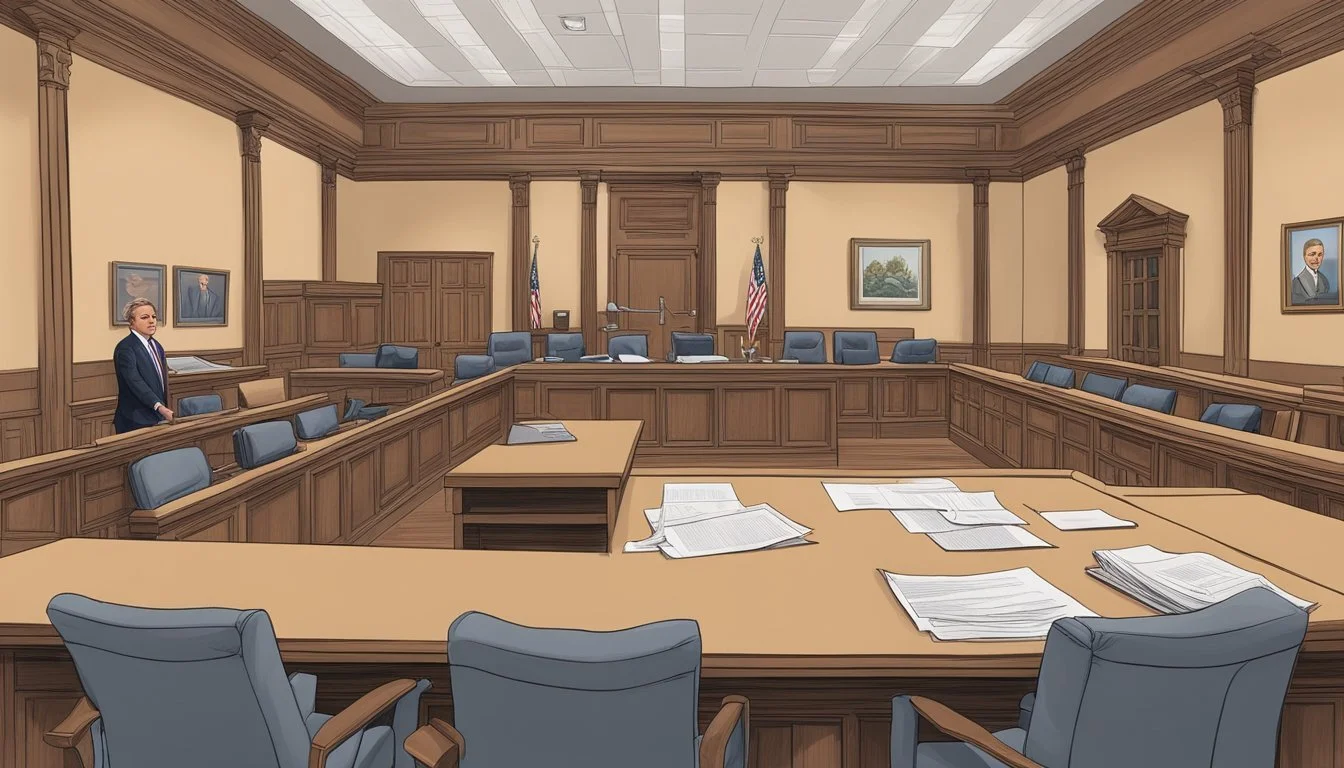JonBenét Ramsey Evidence: Shocking Clues and Unsolved Mysteries That Haunt a Nation!
The JonBenét Ramsey case remains one of the most perplexing unsolved murders in American history. On December 26, 1996, the six-year-old beauty queen was found dead in the basement of her family's home in Boulder, Colorado. Key evidence from the crime scene included a ransom note, DNA samples, and the murder weapon - a garrote made from cord and a broken paintbrush handle.
Despite extensive investigations spanning nearly three decades, the case continues to baffle law enforcement and the public. The evidence collected has been subject to numerous analyses and reexaminations over the years. DNA found on JonBenét's clothing belonged to an unknown male, adding another layer of mystery to the already complex case.
The Ramsey home, once a crime scene, yielded crucial pieces of evidence that investigators hoped would lead to the killer. These items, along with witness statements and forensic analyses, form the foundation of the ongoing investigation. As technology advances, law enforcement continues to explore new avenues to process the existing evidence in hopes of finally bringing closure to this tragic cold case.
The Case Background
The JonBenét Ramsey case shocked the nation with its brutal details and enduring mystery. A young beauty queen was found murdered in her family's home, launching a complex investigation that captivated the public for decades.
The Ramsey Family
JonBenét Ramsey was born on August 6, 1990, to John and Patsy Ramsey in Atlanta, Georgia. The family moved to Boulder, Colorado in 1991. John was a successful businessman, while Patsy was a former beauty queen who encouraged JonBenét's participation in pageants.
JonBenét quickly became known for her performances in child beauty contests. She won several titles, including Little Miss Colorado.
The Ramseys lived in an upscale neighborhood and were well-respected in their community. They had an older son, Burke, who was 9 years old at the time of JonBenét's death.
December 26, 1996
On the morning after Christmas, Patsy Ramsey called 911 to report her daughter missing. She claimed to have found a ransom note demanding $118,000 for JonBenét's safe return.
Police arrived and conducted a search of the home. Initially, they found no signs of forced entry. Hours later, John Ramsey discovered JonBenét's body in the basement wine cellar.
The 6-year-old had been strangled with a garrote made from cord and a broken paintbrush handle. She also suffered a skull fracture and showed signs of sexual assault.
Evidence at the scene included:
The ransom note
The murder weapon
Duct tape
A child's blanket
Public Impact
The JonBenét Ramsey case quickly became a media sensation. The combination of wealth, beauty pageants, and a child victim captured widespread attention.
News coverage was intense and often sensationalized. The Ramsey family faced scrutiny and suspicion from both the public and law enforcement.
The case sparked debates about child beauty pageants and media ethics. It also highlighted issues in forensic science and police procedures.
Despite numerous investigations and suspects over the years, the murder remains unsolved. The case continues to fascinate the public, inspiring books, documentaries, and TV specials.
Initial Investigation
The initial investigation into JonBenét Ramsey's murder was marked by critical missteps and controversial decisions. Key actions by first responders and early evidence collection shaped the complex case that followed.
First Response
Boulder Police Department officers arrived at the Ramsey home on December 26, 1996, responding to Patsy Ramsey's 911 call reporting her daughter missing. Officers conducted a cursory search of the house but failed to secure the crime scene properly.
This oversight allowed family friends to enter and move freely throughout the residence, potentially contaminating evidence. The police initially treated the case as a kidnapping rather than a homicide, further complicating evidence preservation efforts.
Ransom Note Discovery
A lengthy ransom note found by Patsy Ramsey became a central piece of evidence. The 2.5-page handwritten letter demanded $118,000 for JonBenét's safe return.
Investigators noted several unusual aspects of the note:
It was written on paper from a pad found in the Ramsey home
The demanded amount matched John Ramsey's recent bonus
Its length and detail were atypical for ransom notes
Handwriting analysis proved inconclusive in definitively identifying the author.
Crime Scene Challenges
JonBenét's body was discovered in the basement by John Ramsey during a second search of the home. This discovery altered the nature of the investigation from kidnapping to murder.
Key crime scene issues included:
Potential evidence contamination due to multiple people entering the home
Delayed thorough search of the entire premises
Failure to separate and interview the Ramseys immediately
These early missteps in evidence collection and scene preservation complicated subsequent forensic analysis and contributed to ongoing questions about the case.
Evidence Overview
The JonBenét Ramsey case yielded several key pieces of physical evidence. Autopsy findings, crime scene artifacts, and DNA analysis provided crucial information for investigators. These elements continue to play a central role in ongoing efforts to solve the murder.
Autopsy Findings
The autopsy of JonBenét Ramsey, conducted on December 27, 1996, revealed critical details about her death. Dr. John Meyer performed the examination, which uncovered signs of strangulation and cranial trauma.
The cause of death was determined to be asphyxia by strangulation associated with craniocerebral trauma. The autopsy report noted a ligature around the neck, made from a cord and a broken paintbrush handle fashioned into a garrote.
Injuries to JonBenét's skull indicated a significant blow to the head. The report also documented evidence of sexual assault, though this finding remains disputed among experts.
Crime Scene Artifacts
Several key items were recovered from the Ramsey residence. The ransom note, discovered on the staircase leading to the kitchen, became a focal point of the investigation.
JonBenét's body was found in the basement wine cellar. Investigators collected the garrote used in the strangulation, as well as duct tape found near the body.
Other significant artifacts included:
A white blanket wrapped around JonBenét
Fibers from various sources
A piece of broken paintbrush
A rope found in a guest room
These items continue to be scrutinized for potential DNA evidence and other forensic clues.
DNA Analysis
DNA testing has played a crucial role in the investigation. Initial analyses revealed the presence of unidentified male DNA on JonBenét's clothing and under her fingernails.
In 2008, touch DNA testing identified genetic material from an unknown male on the waistband of JonBenét's long johns. This DNA did not match any family members or known suspects.
Subsequent testing has yielded mixed results:
Some samples have degraded over time
New technologies have allowed for re-examination of evidence
Debates continue over the significance of trace DNA findings
John Ramsey has advocated for further testing of seven items from the crime scene, including the garrote, which he believes could yield new DNA evidence.
Theories and Suspects
Several theories and suspects have emerged in the JonBenét Ramsey case over the years. Investigators and the public have considered various possibilities, from intruders to family members, as well as false confessions.
Intruder Theories
Some experts believe an intruder was responsible for JonBenét's murder. This theory suggests someone entered the Ramsey home through an open window or unlocked door.
Proponents point to evidence like a mysterious suitcase found in the basement and potential stun gun marks on JonBenét's body. Additionally, unidentified DNA was found on her clothing.
Investigators explored the possibility that a pedophile ring targeted JonBenét. However, this theory lacks concrete evidence to support it.
Family Member Involvement
The Ramsey family faced intense scrutiny, with some suspecting their involvement. John and Patsy Ramsey were initially considered suspects but were later cleared by DNA evidence.
JonBenét's brother Burke, who was 9 at the time, also faced speculation. Some theorized he may have been involved in an accident that escalated.
Key points of suspicion included:
The ransom note written on Patsy's notepad
Lack of signs of forced entry
Apparent familiarity with the home's layout
However, no family member has ever been charged in connection with the crime.
False Confessions
Several individuals have falsely confessed to JonBenét's murder over the years. The most notable was John Mark Karr, who claimed responsibility in 2006.
Karr's confession initially seemed credible due to his detailed knowledge of the crime. However, DNA evidence quickly ruled him out as a suspect.
Other false confessions have been made, but none have led to arrests or convictions. These cases highlight the challenges investigators face in separating genuine leads from attention-seeking individuals.
Legal Proceedings
The JonBenét Ramsey case involved complex legal actions spanning decades. Multiple grand juries convened, district attorneys played pivotal roles, and the Ramsey family pursued civil litigation.
Grand Jury Actions
In 1998, Boulder District Attorney Alex Hunter convened a grand jury to review the Ramsey case. After 13 months of deliberation, the grand jury voted to indict John and Patsy Ramsey for child abuse resulting in death. However, Hunter declined to sign the indictment, citing insufficient evidence to secure a conviction.
The grand jury's decision remained secret until 2013 when a judge ordered the partial release of the indictment documents. This revelation sparked renewed public interest in the case and raised questions about the initial handling of the investigation.
District Attorney's Role
Mary Lacy, who served as Boulder District Attorney from 2001 to 2009, made significant decisions in the case. In 2008, Lacy publicly exonerated the Ramsey family based on DNA evidence found on JonBenét's clothing. She stated that the DNA belonged to an unknown male and did not match any family members.
Lacy's decision was controversial and later criticized by other law enforcement officials. Subsequent district attorneys, including Stan Garnett, reviewed the case and maintained that the investigation remained open.
The Ramseys' Civil Actions
The Ramsey family initiated several civil lawsuits against media outlets and individuals they believed had defamed them. In 2002, they settled a $70 million lawsuit against the Star magazine for publishing false information about the case.
John and Patsy Ramsey also filed suits against former Boulder police detective Steve Thomas and true crime author James Kolar. These legal actions aimed to protect the family's reputation and challenge accusations of their involvement in JonBenét's death.
Modern Investigative Techniques
Advanced technology and renewed efforts have brought fresh hope to the JonBenét Ramsey case. Investigators are leveraging cutting-edge methods to reexamine evidence and pursue new leads.
Advancements in DNA Technology
DNA analysis has made significant strides since 1996. Touch DNA, which can detect genetic material from skin cells left on objects, is now being applied to items from the crime scene. Genealogical DNA databases, similar to those used in the Golden State Killer case, are being explored to potentially identify the unknown male DNA found on JonBenét's clothing.
Investigators are also using advanced DNA sequencing techniques to separate mixed samples and obtain clearer genetic profiles. These methods may help isolate and identify DNA that was previously too degraded or mixed to analyze effectively.
Cold Case Reexamination
The Boulder Police Department has formed a specialized cold case team to review the Ramsey investigation. This team is applying modern crime scene reconstruction techniques, including 3D scanning technology, to create precise digital models of the Ramsey home.
Artificial intelligence algorithms are being used to analyze voluminous case files, potentially uncovering overlooked connections or patterns. The team is also reinterviewing witnesses and following up on previously unexplored tips.
Social media and public engagement campaigns have generated new leads. The Boulder Police Chief has expressed cautious optimism that these combined efforts may finally bring justice for JonBenét.
Cultural Impact and Media
The JonBenét Ramsey case left an indelible mark on American culture and media. It sparked intense public interest and shaped true crime coverage for years to come.
Media Coverage
The murder of JonBenét Ramsey ignited an unprecedented media frenzy. News outlets provided round-the-clock coverage, turning the case into a national obsession.
Television programs like "48 Hours" devoted extensive airtime to the investigation. Newspapers and magazines featured the story prominently on their front pages for months.
The intense scrutiny affected the investigation and public perception. Some argue it hindered police work by creating pressure for quick results.
Media coverage often focused on sensational aspects of the case. This included JonBenét's participation in child beauty pageants and speculation about her family's involvement.
Documentaries and Books
Numerous documentaries and books have explored the JonBenét Ramsey case since 1996. These works have kept public interest alive and introduced new generations to the mystery.
Notable documentaries include:
"The Case of: JonBenét Ramsey" (2016)
"Casting JonBenét" (2017)
"JonBenét: An American Murder Mystery" (2016)
Books on the case range from investigative journalism to speculative true crime. Some popular titles are:
"Perfect Murder, Perfect Town" by Lawrence Schiller
"Foreign Faction" by A. James Kolar
Recent streaming series have reignited interest in the case. Netflix and other platforms continue to produce new content examining the evidence and theories.
These works often present new analyses or claim to uncover fresh evidence. They contribute to ongoing public fascination with the unsolved crime.
Legacy and Remembering JonBenét
JonBenét Ramsey's tragic death left an indelible mark on American society. Her case continues to captivate public interest decades after the events of December 26, 1996.
The young beauty queen's image remains etched in the collective memory through countless news reports, documentaries, and books. Her story has become a cautionary tale about child safety and the dark side of childhood pageantry.
JonBenét's murder sparked important conversations about child exploitation and media ethics. It led to increased scrutiny of child beauty pageants and their potential negative impacts on young participants.
The case also highlighted issues within the criminal justice system, particularly regarding the handling of high-profile investigations. It prompted law enforcement agencies to reassess their protocols for securing crime scenes and preserving evidence.
JonBenét's family established the JonBenét Ramsey Children's Foundation in her memory. The foundation aims to assist children in need and support efforts to protect children from harm.
Annual memorials and candlelight vigils continue to be held in Boulder, Colorado, where JonBenét lived. These events serve as reminders of the unsolved case and the ongoing quest for justice.
JonBenét's legacy extends beyond her tragic end. She is remembered not just as a victim, but as a vibrant child whose life was cut short. Her story continues to inspire efforts to protect children and solve cold cases.





